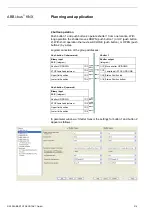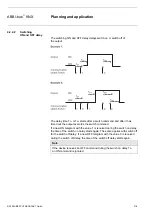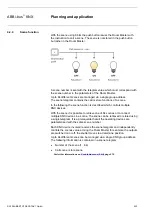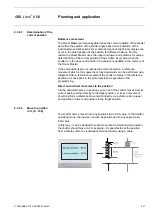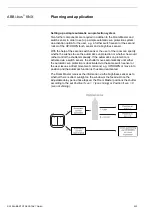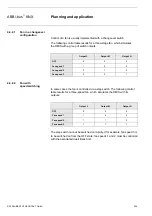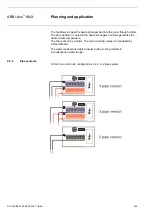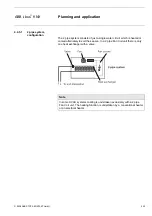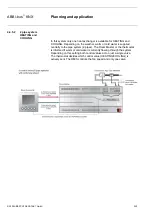
ABB i-bus
®
KNX
Planning and application
© 2008 ABB STOTZ-KONTAKT GmbH
225
When the motor is switched off by an end limit switch, the corresponding
contact on the Room Master remains closed until the parameterised total
travel time has timed out including any programmed “overflow time”.
Only then is there no longer a voltage applied to the output.
Note
With the assistance of the total travel time the current position of the
shutter is determined in ongoing operation. For this reason the total travel
time should be measured and programmed as accurately as possible,
particularly when the functions
move to position
or
automatic control
are
used. Only so is it possible to exactly calculate the current position of
the shutter.
Duration of louvre adjustment
After the shutter moves upwards the louvres are open (horizontal louvre
position). If the shutter is moved downwards, the louvre is initially closed
(louvre position vertical) and the shutter moves downwards. If the shutter
is now once again moved upwards, the louvres will once again be opened
(louvre position horizontal) and will then be moved upwards.
Short movement action can be undertaken by the Room Master in order to
purposely adjust the louvre angle. Thus the shutter is moved for a brief
programmed time – the so-called duration of louvre adjustment – in the
required direction and in this way undertakes a louvre adjustment (STEP
command). The smaller the duration of louvre adjustment selected, the more
accurate the adjustment of the louvre angle.
Measurement of the total louvre travel time
The total travel time of the louvre from opened (horizontal louvre position) to
closed (vertical louvre position) can simply be determined in this way: Open
the louvre fully. Then count how many louvre adjustments are necessary to
completely close the louvres. The total louvre adjustment travel time results
from the number of louvre adjustments multiplied by the switch-on duration.
This value is entered as a parameter.




